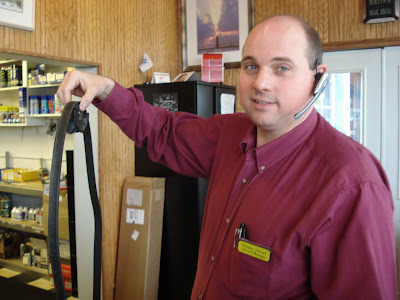 With the kinetic pace of this electronic age, there seems to be little time, patience or interest in basic niceties. The “Please” and “Thank You” that were so ingrained growing up just aren’t there anymore. Maybe I’m being overly sensitive, but this callous disregard for common courtesies annoys me, especially when it comes to drivers’ habits.
With the kinetic pace of this electronic age, there seems to be little time, patience or interest in basic niceties. The “Please” and “Thank You” that were so ingrained growing up just aren’t there anymore. Maybe I’m being overly sensitive, but this callous disregard for common courtesies annoys me, especially when it comes to drivers’ habits.Rarely does a day go by that I don’t witness a rude move by another driver. A little thing like a car cutting in front of me without using a turn signal is annoying to me.
 It’s a seemingly minor thing, but it’s discourteous and potentially dangerous. What’s so hard about placing a finger on the stalk and engaging a turn signal for a few quick flashes? Is the other driver too busy talking on his cell phone or texting to drive properly?
It’s a seemingly minor thing, but it’s discourteous and potentially dangerous. What’s so hard about placing a finger on the stalk and engaging a turn signal for a few quick flashes? Is the other driver too busy talking on his cell phone or texting to drive properly?It doesn’t take long to make a list. Here’s what I’ve seen just recently:
- I am already driving 5 mph over the speed limit, and someone feels they have to tailgate behind me because I’m just not going fast enough. Pass me, or leave me alone.
- There is the driver that knows there is a red light ahead. They either feel that they have to tailgate, or worse yet, they floor it to pass me, then cut me off and slam on their brakes, stopping just in time for the red light. These are the same drivers that have to pass, and then cut in to make an immediate turn. They just can’t wait a few seconds.
- If someone in front of me is going too slow, I turn on my turn signal to begin to pass, and they speed up to prevent it. It’s not a race!
 - What about the driver that stays in the passing lane, with his right hand turn signal permanently left flashing, but never returns to the travel lane? It’s illegal and unsafe for me to pass on the right, but what choice do I have? If anything happens, I’m to blame.
- What about the driver that stays in the passing lane, with his right hand turn signal permanently left flashing, but never returns to the travel lane? It’s illegal and unsafe for me to pass on the right, but what choice do I have? If anything happens, I’m to blame. - I find the driver with the hand on the horn aggravating. It’s unnecessary to
blow the horn for every move; when making a turn, rounding a bend or whenever another car is in sight. It’s jarring and rude to other drivers.
- Then there is the uncaring shopper in the parking lot of the grocery store.
Don’t place your bags on my car while you open your door, don’t rest your shopping cart against my door, and don’t use my car’s door as a door stop as you swing yours open. It’s selfish and inconsiderate, not to mention that it’s downright destructive.
This is just a partial list, I’m sure that you have your own. There’s no need to be rude behind the wheel. A little courtesy while driving makes the highways a more pleasant place, not to mention a much safer place to travel. Please and thank you!
MaineAutoMall.com Auto Blog
Promote Your Page Too











